This story is part of a series designed to introduce the perspectives of alumni from the National Geographic Society and The Nature Conservancy’s global youth externship program. Each guest author is an emerging leader in conservation and storytelling.

I’m a 24-year-old Black conservationist who lives and works out of Wilmington, North Carolina. Let’s start by addressing the elephant in the room: how does a Black man come to pursue a career in marine science?
As a child who learned to read very young, the type of television I was allowed to watch was also quite limited; some of my early childhood conservation highlights were enjoying the adventures of people like Steve Irwin, The Kratt Brothers, and Jeff Corwin.
Many of the terrestrial (land) animals these individuals worked with enamored me. However, my young brain consistently inquired how much was out there and just as fascinating, but in the open ocean! Our planet is 70% water, and the water on our planet is vital for life, productivity, and the weather cycles essential for humanity. Important to more than just humanity, the conservation of the ecosystems that coexist around us is vital to ensure the longevity of life on this planet.
With that present in my mind at a young age, the ocean and animals that lived in the water fascinated me to the extent that the love persisted into adulthood and through college. I have grown to genuinely believe that marine conservation is critical to slowing the effects of climate change and lessening human impact on our beloved planet.
My path to becoming a field biologist and conservationist is an extremely untraditional route! After attending Otterbein University for a year and then transferring to a trade program at Cape Fear Community College for Marine Technology, I took about two years to build my resume.
My resume-building started with a trip to a salmon hatchery in Alaska one summer, and upon my return, I was in an accident where I broke my spine. It was through my time at Cape Fear Community College that I connected with a professor who made me aware of a job listing to work with my first endangered species in the wild!
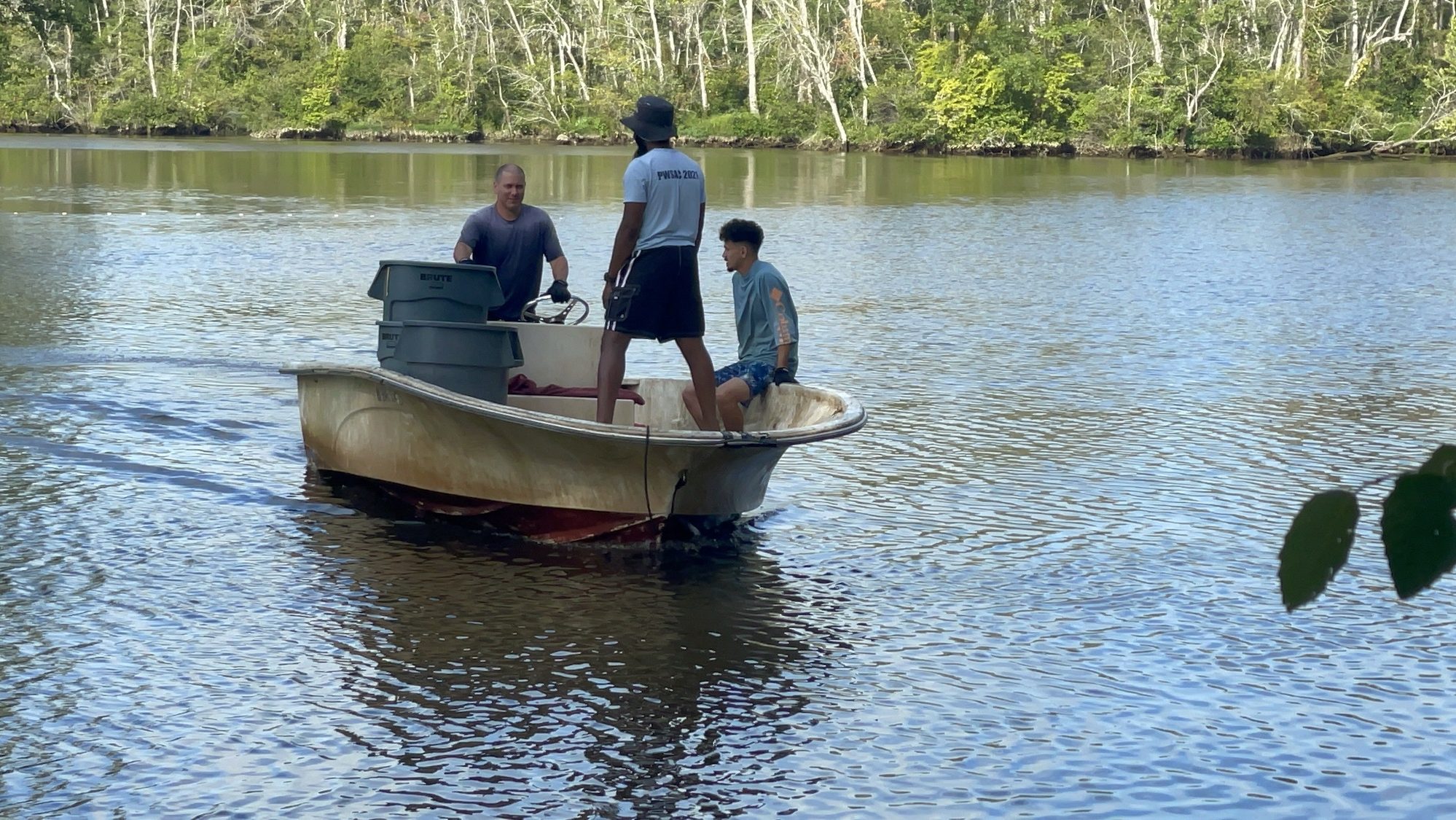
This particular professor also shared knowledge with me of a remote externship opportunity with National Geographic, Paragon One, and The Nature Conservancy that would focus on marine and community conservation.
After being selected for this project through an interview process, I was tasked with highlighting an issue that was important to me in marine conservation, as well as offering tangible solutions that can be carried out to help make a positive impact on the issue at hand.
Through weekly training sessions and mentorship from different National Geographic Explorers and researchers and staff members from The Nature Conservancy, externs were able to receive one-on-one personal guidance on how to best present the issues each of us chose to present about, as well as receive additional instruction on how to specialize it for our target audiences.
To be completely honest, this externship is still one of the best career development opportunities I’ve been given the privilege of receiving in my young adult career!
After recovering from breaking my spine, I applied for and received a job offer to work with Jason Kahn and Christian Hager at Friends of Sturgeon (FROST) on a mark-recapture project with Atlantic sturgeon (Acipenser oxyrinchus).
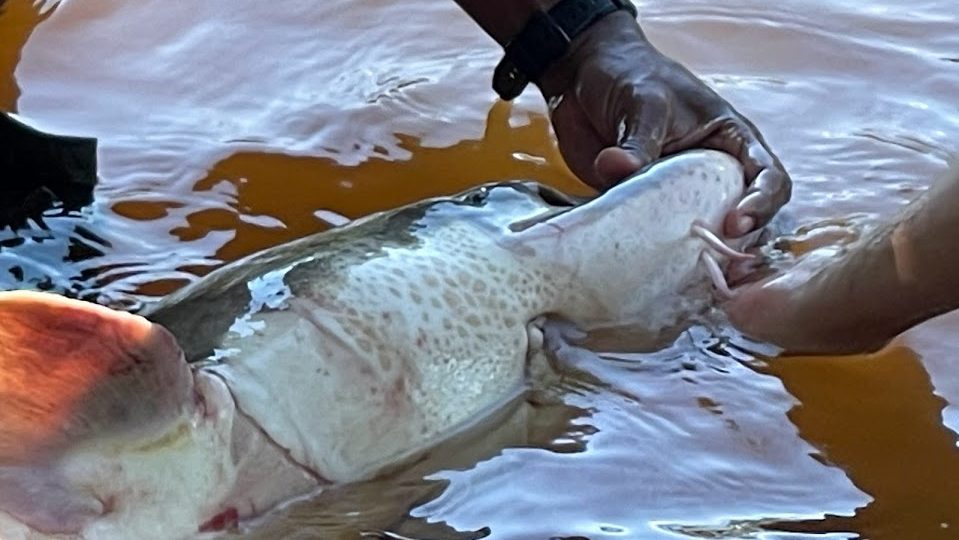
Meet the Dinosaur Fish
The Atlantic sturgeon is critically endangered. There are fewer than 30,000 thought to exist in the wild population. This worrying fact is my reason for sharing the story of the Atlantic sturgeon with readers today.
The Atlantic sturgeon is an animal that can grow to be more than 8 feet long and weigh over 700 pounds. The fish is covered in specialized scales called scutes. There are five rows of these scutes that cover the animal’s body, and this particular adaptation means that as adults, Atlantic sturgeon specifically have no primary predators that attempt to feed on them. They are too large, strong, and tough-skinned.
This is why it is so worrying that an animal with no natural predators has seen over a 98% population decline in the last 200 years.
The reason that the Atlantic sturgeon’s population took such a hard blow can largely be attributed to the colonization of the North American continent. The harvest of the spawning run of Atlantic sturgeon, right before the winter, was a tremendous food source for many people who otherwise would not have been able to find much food to keep them through an entire winter. Some historians even argue that had it not been for the sturgeon, Virginia might have been colonized by the Spanish instead.
Become An Extern
Join hundreds of global youth who are connecting with the National Geographic Society and The Nature Conservancy.
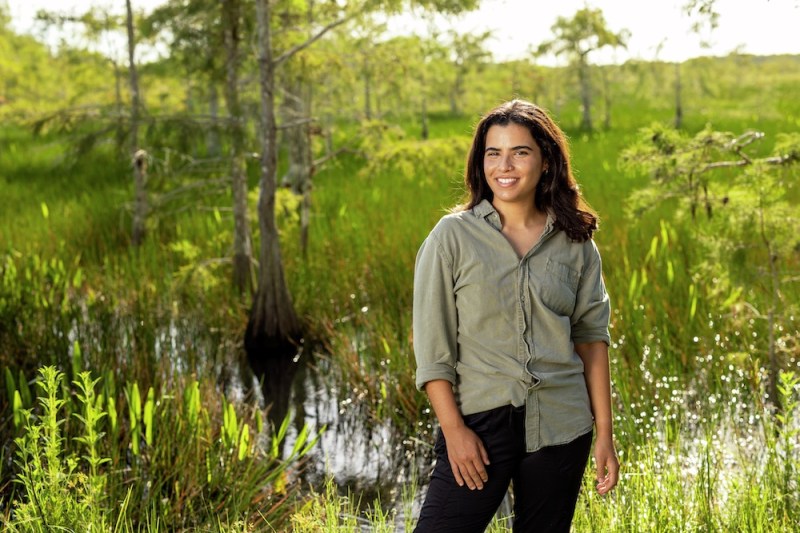
Atlantic sturgeon are known as megafauna, which are enormous animals that play a crucial role in their environments. For the sturgeon to have been on the planet relatively unchanged for millions of years and for their population numbers to drop so strongly in the last 200 years undoubtedly affects the environments and biomes that house and shelter the Atlantic Sturgeon.
A fun fact about sturgeon biology is that each fish has a unique face. This means that each animal can potentially be identified repeatedly just by seeing its face if there have been pictures taken of it before!
The Atlantic sturgeon is diadromous, which is a scientific way to say that the adults live out in open saltwater environments, but when it’s time for spawning season, they cue a migration into freshwater from the ocean to lay their eggs.
This happens for multiple reasons, the first one being that juvenile sturgeon are more likely to reach adulthood in a freshwater environment until their armored plates grow in and become much more prominent. There are not as many large predators in a river as there are in the open ocean. Another reason is thought to be that salinity does not provide a viable biome for incubating sturgeon eggs.
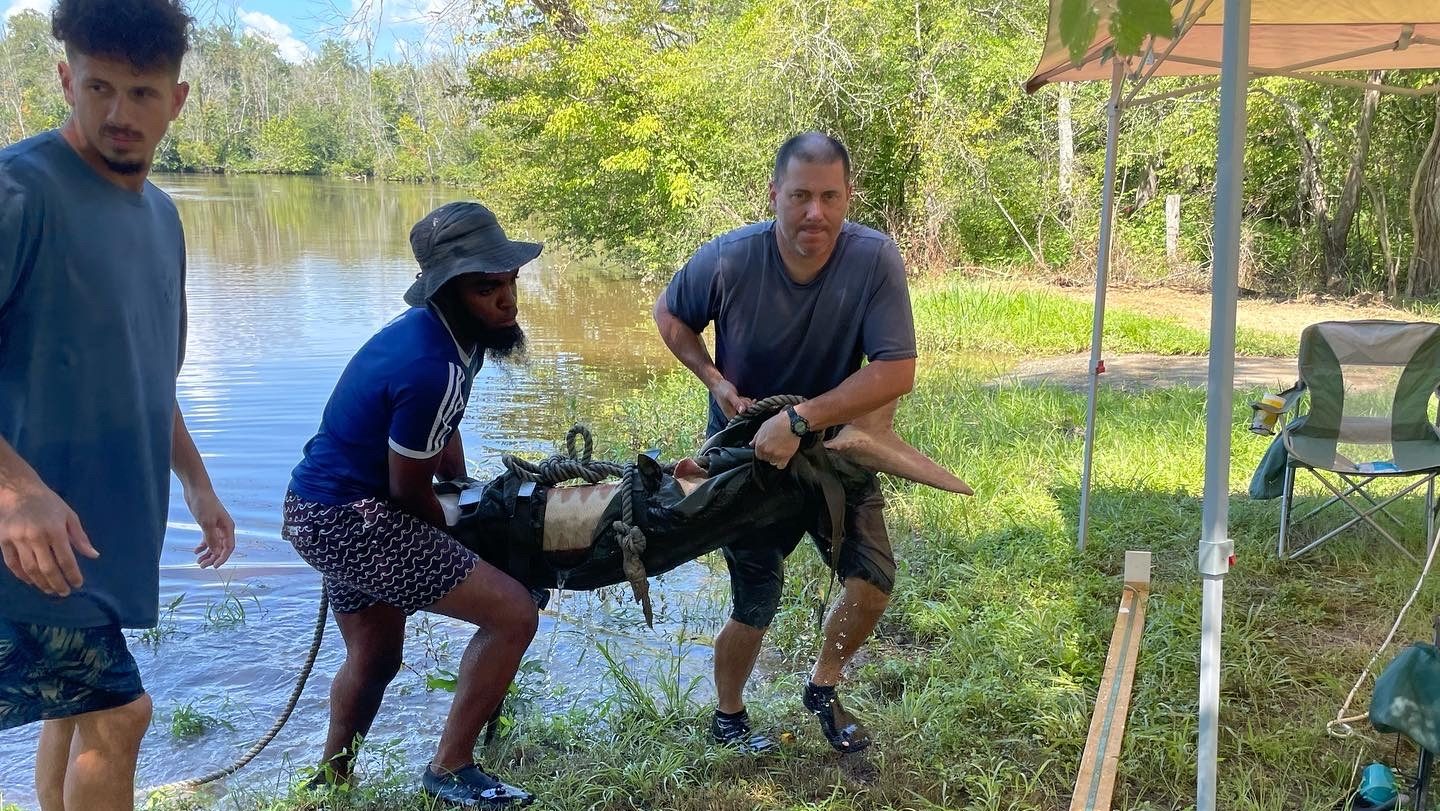
A World with Sturgeon
The Atlantic sturgeon can be found on nearly the entire east coast, from as far north as Labrador to as far south as the coast of Florida. This is a range that historically used to have 38 different rivers the Atlantic sturgeon would spawn in, and now that number is down to 22.
The most important thing to realize here is that human impact is the single most contributory factor to the decline of Atlantic sturgeon populations. From historically being hunted to near extinction for their caviar to having to deal with artificial dams and development along rivers and bays, the Atlantic sturgeon has been fighting an uphill battle with surviving human impact for over 200 years. The most worrying part about that is that a large majority of people have no idea that this is the case.
One of the biggest obstacles is awareness for the next generation: to raise kids in a world that still hosts a healthy Atlantic sturgeon population. Education about the species can go a long way in finding the support and, ultimately, federal and state funding for the necessary research to help impact the species for the better.
Sturgeon are a very long-lived species that also takes a long time to mature. This is a double-edged sword in terms of conservation. Even though it is a good thing they live for an extended period, they are so slow to mature, and it will take a long time and many changes in legislation as well as a reevaluation of how freshwater and bay ecosystems are protected from human development.
The opportunity to work in the field with a species as uniquely beautiful and resilient as the Atlantic sturgeon gave me an awareness for an animal that I did not know was at such risk, nor did I truly understand the value of this dinosaur fish throughout history.
It allowed me to see first-hand just how strong, beautiful, and divine this animal’s physiology is, as well as inspired me to make a point to attempt to help preserve their populations so that maybe the generation after me has an opportunity to coexist in a world where the Atlantic Ocean still has sturgeon living freely in it.
Seeing an Atlantic sturgeon existing in its natural habitat in person is truly a magical experience. Powerful enough that it truly breaks my heart to think about the idea of future generations not having the chance to experience such a remarkable cornerstone of nature on the east coast of North America.
Charismatic megafauna like tigers and giant pandas dominate what we often see in the media. But many species we have in our local ecosystems often go unnoticed and underappreciated. Being lucky enough to work with Atlantic sturgeon has ensured that I will appreciate the species immensely for the rest of my life and I hope my work can influence others to develop a similar appreciation.
Discover the conservation work of other externs from Colombia, the Maldives, and the United States in Nature Conservancy Magazine.
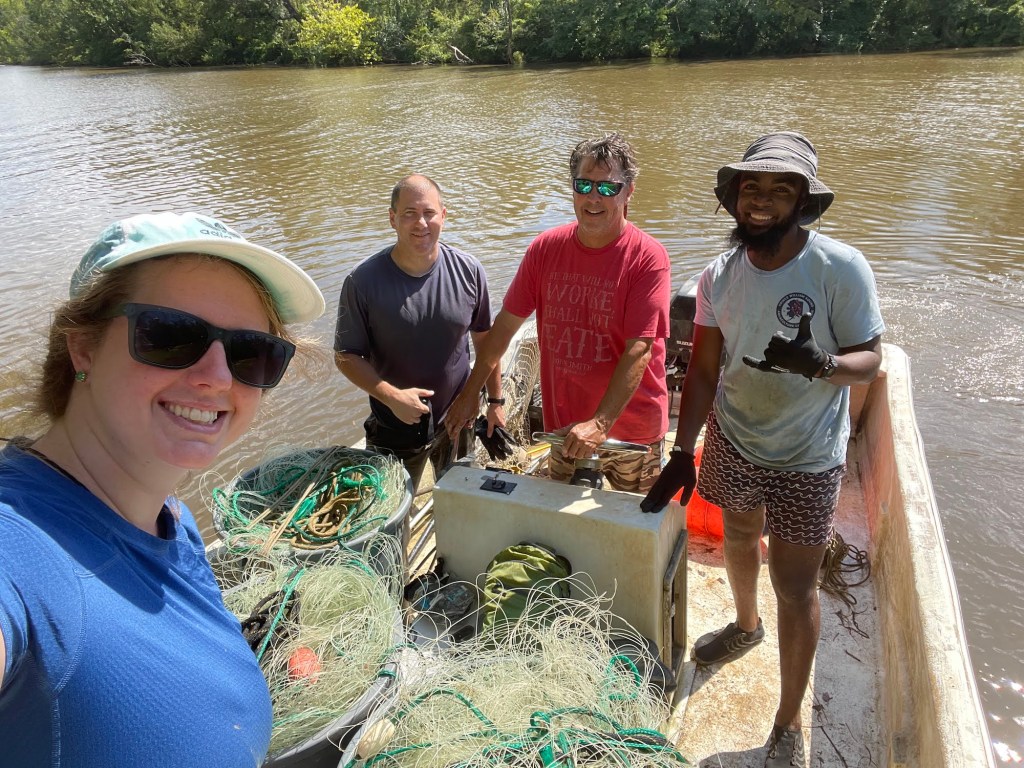



I loved your article. I’ve been fascinated by this dinosaur of a fish since I was a kid. I hope the sturgeon can be saved.
A very uplifting artcle by the author. As long as there are dedicated young conservationists like Joseph Hill, there is still hope for this planet.
This is a very impactful article! Well done, Joseph Hill! I live in southern NJ and am aware of the role sturgeon played in the past, from the vast caviar harvests to the harvesting of sturgeon themselves…a very sad history and similar to many other species’ stories. Thank you for bringing it to our attention of so many people who may have been unaware of it.